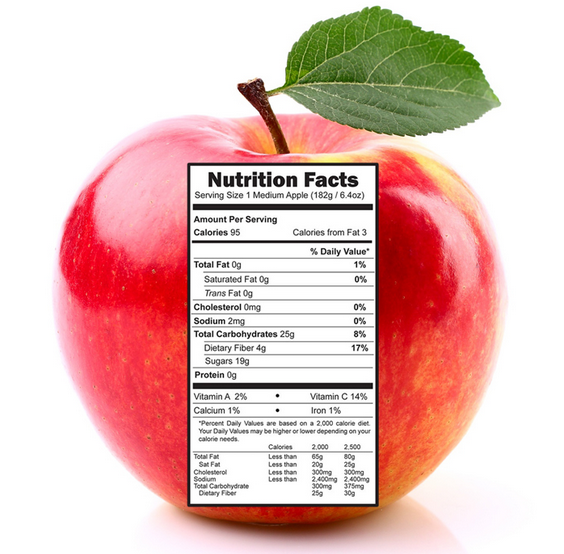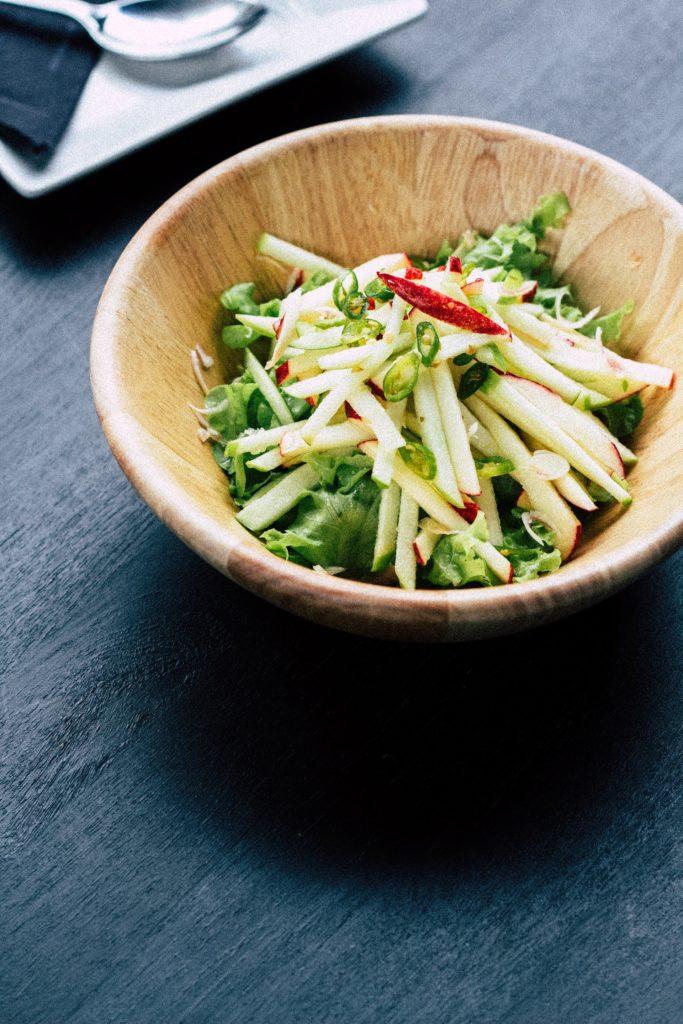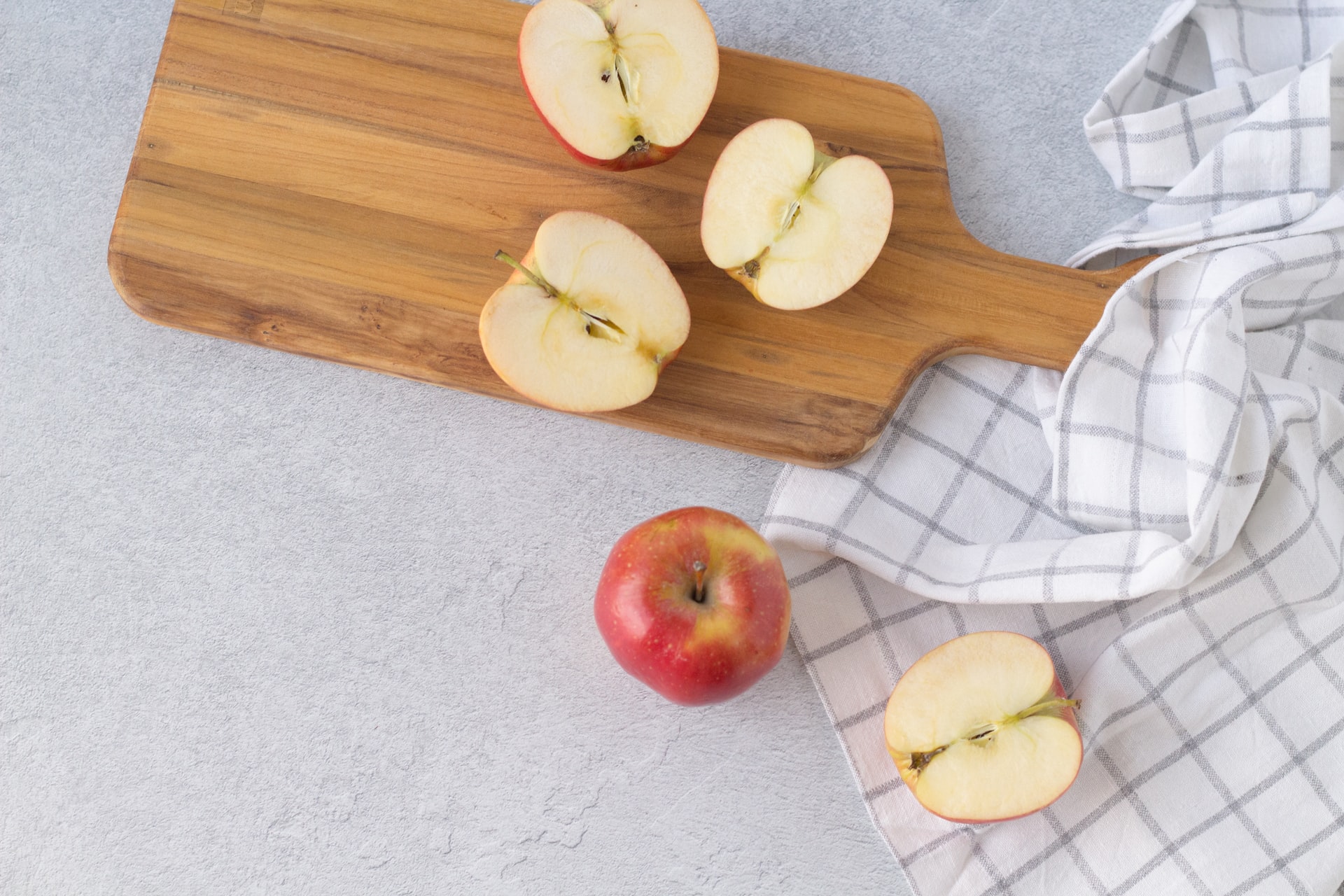Apples are one of the top nutritious foods world wide. So simple, but why? They stay fresh for a long time, are easy to transport from the grower, can be prepared hot or cold and are filled with healthy nutrition.
There are 7500 varieties of apples worldwide and they are generally categorized as red, yellow or green. If you know someone who does not like apples, it usually means they found the right “apple of their eye”.
Over the last 10 years, the actual composition of apples has been decoded and nutrition researchers have confirmed that apples really are the perfect package. They contain many essential nutrients, vitamins and minerals, they are fat-free, salt-free and fibre-rich. Apples are high in polyphenols which are anti-oxidants that are found in the skin as well as the flesh of the apple.

Healthy Benefits
Improves Digestive Health. Apples have both soluble and in-soluble fibre meaning that some fibre, like pectin, is absorbed and used by various body organs and some fibre stays in the GI tract to help food move quickly and eliminate toxins.
Reduces Bad Cholesterol. In a 2011 study, women who had 1/3 cup of apples a day were found to have 23% less bad cholesterol and 4% increased good cholesterol in just 6 months. Great example of a little going a long way.
Blood Sugar Regulation. Apples have both fast and slow release sugars which helps you get some glucose immediately, within 20 minutes, but also a delayed release, 45-60 minutes, that keeps you sugar regular and reduces hunger peaks. Often recommended for diabetics between meals.
Improved Dental Health. Chewing raw apples stimulates saliva production which carries natural bacteria that reduce tooth decay, gum disease and cavities.
Cancer Prevention. Apples contain flavonols found in the peel and flesh and these have been linked to lower incidences of liver, colon, pancreatic and breast cancers.
Improved Immune Function: Red apples contain an anti-oxidant called quercetin which has been found to fortify your white blood cell production especially in times of stress. Seems like the right time to look for a juicy red apple.
Serve Cold
- Thin apples slices topped with a slice of cheese. Easy for the kids to make and eat.
- Add apple chunks to your salad or cole slaw
- Mix cool fresh apples slices with roasted or boiled veggies
- Use apple to add to your sandwich fixings especially with turkey or cheese.
- Great snack for dogs, but not the seeds.
- Fresh or dried apples on your hot or cold cereal

Serve Hot
- Use a slow cooker to make apple crisp, time-saving and stays crunchy.
- Lunch surprise, apple quesadillas with cheese topped with sweet or savoury sauce
- Add apple to meat dishes like pork chops or sausage to lighten the taste.
- Apple appetizers or desserts like baked brie with pecans, apple and caramel sauce
- Add apple to butternut squash or carrot soup to sweeten it just a bit
- Baked apples in cookies, loaves, pies and cakes.
Food Alert!
Babies under 6 months are not advised to be given apple juice and too much apple juice can cause diarrhea, rashes and early cavities.
All apples must be washed well if you are going to eat the peels as they can carry germs, bacteria and pesticides.
Apple juice is concentrated and contains high amount of sugars and no fibre, therefore, water it down if you are drinking or take small amounts.
Resources
https://www.countryliving.com/food-drinks/g650/apple-recipes/
Over 70 new recipes for one of the world’s oldest foods



